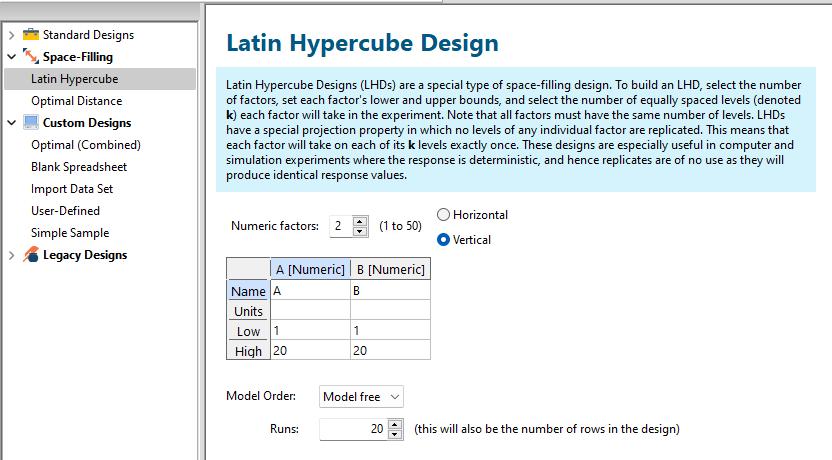Latin Hypercube (Stat-Ease 360® only)

Latin Hypercube Sampling: \(k = 2, n = 20\).
Above is an example of a Latin Hypercube design for \(k = 2\) factors and \(n = 20\) runs (levels) selected using Latin Hypercube sampling.
Latin Hypercube designs are model independent (model free), space filling designs often used in computer experiments. In these designs each of the \(k\) factors is divided into \(n\) equal levels such that there is only one run containing a given level of a factor. The number of total runs is also equal to \(n\).
Presently these designs are optimized by distance in order fill out the factor space. The integer levels are converted to the -1 to +1 coded space and subsequently the space of actual factor values.

Setup for the above Latin Hypercube design.
Numeric Factors: The number of continuous numeric factors in the Latin hypercube design.
Runs: The number of runs \(n\) in the design and the number of levels for each numeric factor. The recommended number of runs and default for a Model Free latin hyper cube is 10 times the number of numeric factors (\(10 k\)).
References
